Entheos Academy – Jonathan Bailor – How to Exercise Less–But Smarter–To Burn Fat & Boost Health
$47.00
Product Include:[WebRip – 3 MP4s]
File size:847.36 MB
Entheos Academy – Jonathan Bailor – How to Exercise Less–But Smarter–To Burn Fat & Boost Health
**More information:
Get Entheos Academy – Jonathan Bailor – How to Exercise Less–But Smarter–To Burn Fat & Boost Health at Salaedu.com
Description
Entheos Academy – Jonathan Bailor – How to Exercise Less–But Smarter–To Burn Fat & Boost Health [WebRip – 3 MP4s]
In this talk, Jonathan Bailor shares why exercising more does not cause long-term fat loss. Here are 10 Big Ideas (Part 1) on how to burn fat and boost your health by exercising less, but smarter!
The Top 10 Big Ideas
1 Be on Purpose, Don’t Wander “My grandmother, she started walking five miles a day when she was sixty. She’s ninety-seven today and we don’t know where the hell she is.” – Ellen DeGeneres
2 Exercise vs. Food Intake In the same way that people drink more fluids when they exercise more, they also eat more when they exercise more. Researcher Hugo R. Rony found: “Consistently high or low energy expenditures result in consistently high or low levels of appetite. Thus men doing heavy physical work spontaneously eat more than men engaged in sedentary occupations.”
3 Obesity vs. Exercise J.M. Friedman at Rockefeller University makes a similar point: “Exercise by itself has not been shown to be highly effective in treating obesity because the increased energy use from exercise is generally offset by increased caloric intake.”
4 Low Quality Food Compounding the problem, many people who exercise more do not eat high-quality food. The majority of people get most of their calories from low-quality starches and sweeteners. Therefore, exercising more triggers the consumption of more low-quality food. More low-quality food means less need to burn body fat, more clogging, and a higher set-point. Far from burning body fat, we burn time and build-up clogs.
5 The Exercise Trap Here is one scenario for exercising more: Michelle goes for a 30-minute jog and burns 170 more calories than she would have burned by sitting at home and reading this book. She is trying hard to cut calories, so she does not drink any sugary sports drinks and fights through the hunger pangs after her jog. At dinner Michelle unconsciously drinks an extra glass of reduced-fat milk thanks to her increased thirst and hunger. The net result of her jog is thirteen more calories than if she had not exercised. 30 min. jog….…….-170 calories 12 oz. milk………..+183 calories _______________________________ Net………….….…….+13 calories
6 Sweetened Power Juice Much more commonly, people will have sweetened “power juice” while pounding it out on the treadmill. Afterward, they overeat low-quality food. The net result is more low-quality food and more clogging. 30 min. jog………………………………………………………….….-170 calories 24 oz. sports drink………………………………………..……….+189 calories Extra half serving of Fettuccine Alfredo………….……..+390 calories Net…………………………………………………………………..……+409 calories
7 Food Industry Trickery The food industry is very well aware that exercising more encourages eating more low-quality food. That’s why the following corporations serve on the executive board of the American Council on Fitness and Nutrition: Coca-Cola Company PepsiCo Hershey Foods Corporation Sara Lee Corporation Kellogg Company Kraft Foods General Mills Campbell Soup Company ConAgra Foods Del Monte Foods Grocery Manufacturers Association H.J. Heinz Company Masterfoods USA National Restaurant Association Unilever United States American Association of Advertising Agencies American Beverage Association Association of National Advertisers
8 It’s Just Good Business Are we told to exercise more because it is good for fat loss or because it is good for business? The National Soft Drink Association advises us to “consume at least eight glasses of fluids daily, even more when you exercise. A variety of beverages, including soft drinks, can contribute to proper hydration.”
9 The Big Fat Idea But wait. If you exercise less, won’t you gain body fat? As you’ll see in future posts that depends on the type of exercise you do. In the next two posts we’ll cover how exercising less does not cause long-term fat gain and eating more does not cause long-term fat gain.
10 Be Active Note: Being active is good for your health. We definitely should not sit around all day. Studies consistently show that physical activity boosts life expectancy. However, they do not show that traditional cardiovascular exercise effectively burns body fat long term.
In this talk, Jonathan Bailor shares why exercising less does not cause long-term fat gain. Here are 10 Big Ideas (Part 2) on how to burn fat and boost your health by exercising less, but smarter!
The Top 10 Big Ideas
1 What Does the Data Say? “It is reasonable to assume that persons with relatively high daily energy expenditures would be less likely to gain weight over time compared with those who have low energy expenditures. So far, data to support this hypothesis are not particularly compelling.” – American Heart Association 2 BIG FAT MYTH The idea that we have an obesity epidemic because people are not exercising enough is a myth. Saffron A. Whitehead at St. George’s University of London reported: “Most studies show that the obese do about the same physical activity as [the] lean.”
3 Outdated Aerobics Common sense tells us that if exercising less is the cause of our collective weight issues, we must be collectively exercising less. Are we? Not even close. The idea of aerobic exercise did not even exist in the mainstream until the 1968 publication of the book Aerobics by Dr. Kenneth H. Cooper. Dr. Entin, with the department of Biological Sciences at Northern Arizona University, explains the common view before then: “In the 1930’s and 40’s…high volume endurance training was thought to be bad for the heart. Through the ‘50’s and even ‘60’s, exercise was not thought to be useful…and endurance exercise was thought to be harmful to women.”
4 The Numbers Rise During that same period the percent of obese Americans was dramatically lower than today. Nowadays, Americans exercise more than anyone else in the world and are the sixth heaviest population in the world. How could doing too little of something that we did even less of before the problem existed cause the problem?
5 We’re Not Just Lazy Some people claim that we are getting heavier because we are using labor-saving devices. Yet that doesn’t make sense. The vast majority of labor-saving devices became common in households decades before obesity shot up. Use of dishwashers, washing machines, vacuum cleaners, and all the major labor-saving devices increased most between 1945 and 1965. However, obesity increased little during that time period. Use of these devices increased very little between 1978 and 1998 while obesity rates shot up. So how could labor-saving devices be the cause of weight problems?
6 Dig Deeper Reread the quote from the American Heart Association from Big Idea 1. Digging into the data and abandoning assumptions about our activity levels, researchers like New York University’s Marion Nestle tell us, “…the activity levels of Americans appear to have changed little, if at all, from the 1970s to the 1990s.”
7 TV Doesn’t Make You Fat What about all the TV watching? That’s got to be the cause, right? That too does not correspond with the facts. Tsinghua University professor Seth Roberts determined: “Time spent watching TV increased by 45% from 1965 to 1975, yet obesity increased little over that time; from 1975 to 1995, when obesity shot up, TV watching increased only a little.”
8 Clogging Up the System Eating lower-quality food creates the clog that causes chronic weight gain. People can be plenty active, and exercise for hours, but if they eat low-quality food, they will get clogged and gain body fat. Long-term weight gain is determined by food and exercise quality, not quantity.
9 But isn’t Jogging Good for Our Heart? Not when compared with the smarter types of exercise we will cover later. The American Heart Association found that jogging injures more than half of the people who do it. This high injury rate is due in part to the fact that every mile we run, our feet hit the ground about 900 times. Let’s say you weigh 150 pounds. That means for every mile you run, you are smashing 135,000 pounds of force against your joints, ligaments, and every other part of your body. You could say that’s like dropping thirty-seven Toyota Camrys on yourself every time you go for a jog. Jogging is “healthy exercise” in the same way that boxing is “healthy exercise.”
10 Focus on the Facts! The theory that we have an obesity epidemic because people are not exercising enough is disproved by the data. In a July 2013 report, the Institute for Health Metrics and Evaluation found, “As physical activity increased between 2001 and 2009, so did the percentage of the population considered obese.” Other studies go on to show that obese people do about the same amount of physical activity as lean people do. The only “weight versus activity” relationship that has been proved is that obesity may lead to inactivity. Consider the conclusion of a 2004 University of Copenhagen study: “This study did not support that physical inactivity . . . is associated with the development of obesity, but . . . that obesity may lead to physical inactivity.” More body fat may lead to less exercise, not the other way around. As Dr. Brad Metcalf, a researcher in the Department of Endocrinology and metabolism at the Peninsula Medical School, concluded in his 2011 study: “Physical inactivity appears to be the result of fatness rather than its cause. This reverse causality may explain why attempts to tackle childhood obesity by promoting physical activity have been largely unsuccessful.”
In this talk, Jonathan Bailor shares why eating more does not cause long-term fat gain. Here are 10 Big Ideas (Part 3) on how to burn fat and boost your health by exercising less, but smarter!
The Top 10 Big Ideas
1 Low Quality vs. High Quality “[We found] highly significant inverse correlations between food energy intake and adiposity [body fat].” – H. Keen, King’s College London Eating more low-quality food causes us to gain body fat. But that does not mean eating more food produces the same result. Interestingly enough, eating more high-quality food has been clinically proven to cause body fat to be burned.
2 The Research is Clear The research on this topic comes from all over: J. Volek’s Study at the University of Connecticut: People in the eat-more-high-quality-food group ate 300 more calories per day and burned more body fat. F.F. Samaha’s Study at the University of Pennsylvania: People in the eat-more-high-quality-food group ate a total of 9,500 more calories and lost 200% more weight. P. Green’s Study from Obesity Research: People in the eat-more-high-quality-food group ate a total of 25,000 more calories without gaining any additional weight. S. Sondike’s Study from the Journal of Adolescent Health: People in the eat-more-high-quality-food group ate a total of 65,000 more calories and lost 141% more weight.
3 It’s Not about the Calories How are these results possible? Research reveals two main reasons: First, a calorie is not a calorie. Second, an unclogged fat metabolism system burns excess calories instead of storing them. The next section will cover why a calorie is not a calorie, so let’s turn first to how unclogging enables our body to burn—instead of store—excess calories.
4 Mayo Study (Not the Condiment, The Clinic) In a Mayo Clinic study, researchers fed people 1,000 extra calories per day for eight weeks. A thousand extra calories per day for eight weeks totals 56,000 extra calories. Everyone gained sixteen pounds—56,000 calories worth—of body fat, right? Nope.
5 The Real Results Nobody gained sixteen pounds. The most anyone gained was a little over half that. The least anyone gained was basically nothing—less than a pound. How could that be true? People are eating 56,000 extra calories and gaining basically no body fat? How can 56,000 extra calories add up to nothing?
6 Once Again, It’s Not about the Calories That’s because extra calories don’t have to turn into body fat. They could turn into heat. They could be burned off automatically. Researcher D.M. Lyon in the medical journal QJM reported: “Food in excess of immediate requirements…can easily be disposed of, being burnt up and dissipated as heat. Did this capacity not exist, obesity would be almost universal.”
7 The metabolism Trifecta Eating more and gaining less is possible because an unclogged metabolism has all sorts of under appreciated ways to process excess calories other than storing them as body fat. In the Mayo Clinic study, researchers measured three of them: 1. Increase the amount of calories burned daily. 2. Increase the amount of calories burned digesting food. 3. Increase the amount calories burned via unconscious activity.
8 metabolism Magic So how did some people ate 56,000 extra calories and gain essentially nothing? Instead of storing the excess calories as body fat, their unclogged metabolisms automatically increased the base amount of calories they burned.
9 Eat More, Burn More On the surface this study seems shocking, but we have all seen examples of “eat more, burn more” in our day-to-day lives. Think about naturally thin people you know who eat a lot, exercise a little, and stay slim. They eat more and burn more. Just as eating less causes the fat metabolism system to slow down, eating more causes an unclogged metabolism to speed up.
10 Fix Yourself for Optimal Fat Loss The key to long-term fat loss isn’t eating less or exercising more. It’s getting our metabolism to burn rather than to store excess calories.
More Courses:Health – Fitness – Medical
Outstading Courses:https://tradersoffer.forex/product/prayers-that-heal-the-heart-complete-electronic-package-by-mark-virkler/

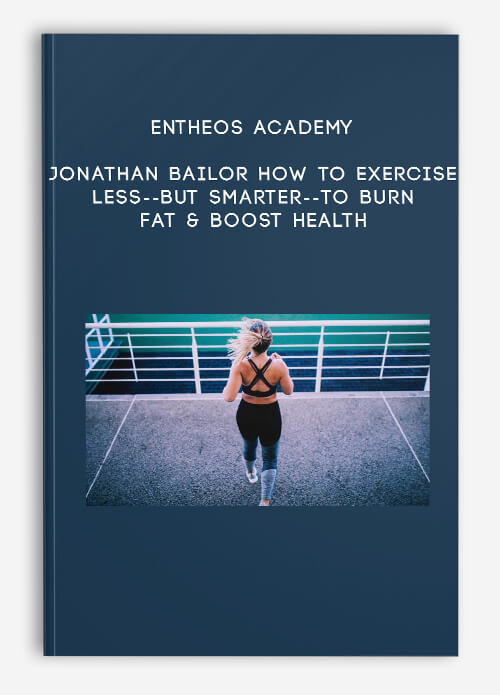

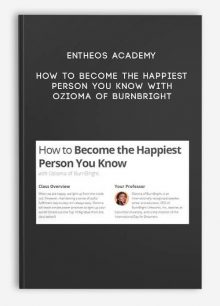
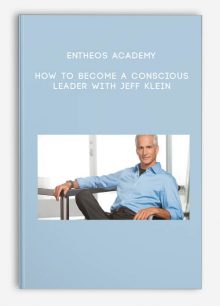
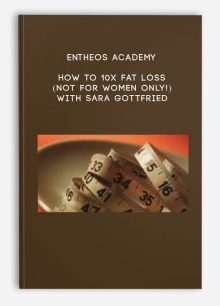
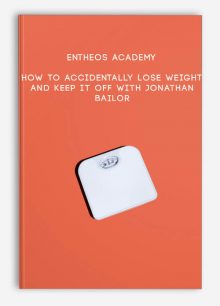
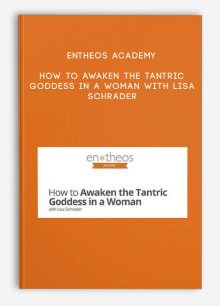



Reviews
There are no reviews yet.